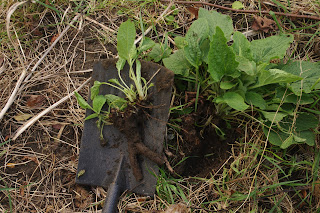The garden of the Camden Art Centre is a hidden gem of North London. The gallery fronts onto Arkwright Road and alongside the Finchley Road with what is in effect a mixed herbaceous border on a large scale.
The garden at the back of the gallery includes a large grassy area fringed by mature trees.
The lawn slopes sharply to the terrace of the gallery's cafe. The traffic of the Finchley Road can be noisy unfortunately but the greenery of the surroundings is very pleasant.
When the gallery reopened in 2004 after a period of refurbishment garden designer Julie Bixley was commissioned to develop the garden with extensive new planting. She conceived a woodland garden of shade tolerant species among the existing large trees. The border along the front and side of the gallery gets more sun and the choice of plants reflects this.
Over the years the planting has been extended and augmented and Julie continues to select the plants accordingly. The garden has evolved and that is ongoing. For example a new walkway is being created from the front of the building to the side entrance which will necessitate some replanting in its wake.
I should declare an interest here. Julie roped me in to do the initial tranche of planting with her back in 2004 and I've returned from time to time for some more spade work. I spent four days there last week working my way through a large delivery of plants for various parts of the garden including the new bed above.
The weather was exceptionally clement, really very warm and sunny considering we are still in March. A very nice spot to work BUT one of the worst places in London to dig a hole! The underlying soil is clay. London clay is very dense anyway but particularly problematic here due to the building works twenty years ago. A lot of excavation took place unearthing a great deal of clay which was dragged back onto the garden area. Any decent top soil and subsoil ended up buried under layers of near impenetrable crud.
Fortunately you wouldn't know that to look at the garden and as I say it's a bit of a gem.






























